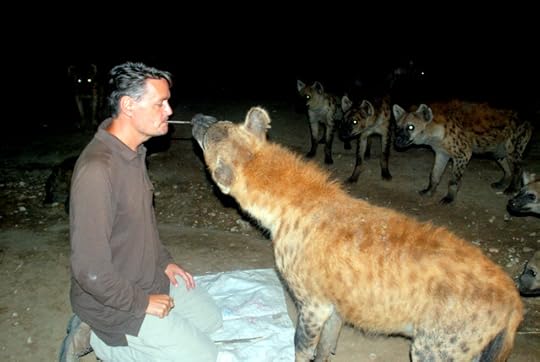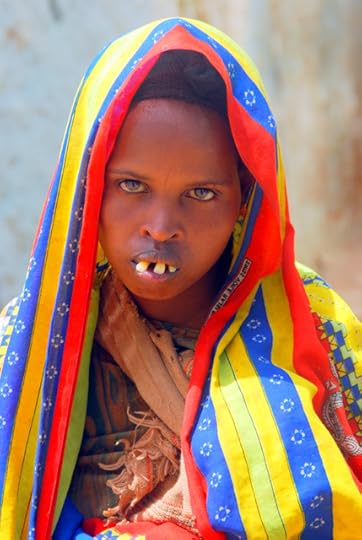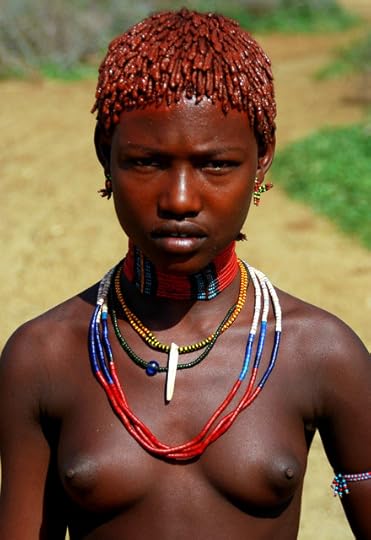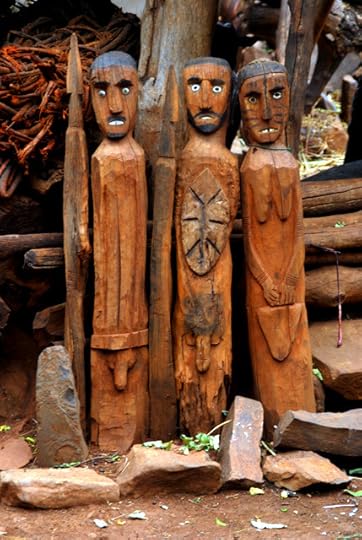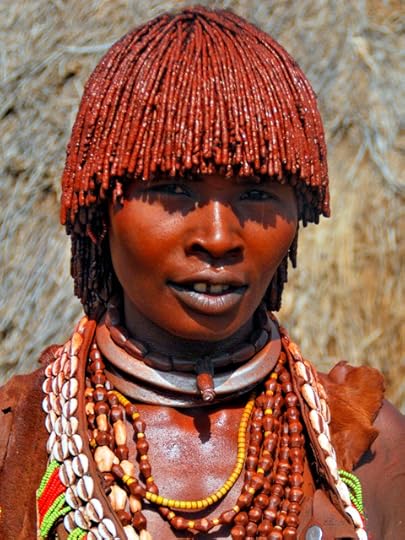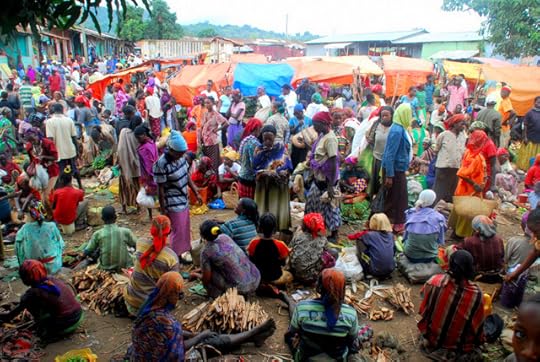Roderick Phillips's Blog, page 4
June 17, 2014
The Chat chewers of Harar, Day 323
Perhaps the most defining aspect to life in Harar (at least for the men) is the chewing of chat, an addictive stimulant. Locals buy the stuff by the bushel from Oromo women – the chat peddlers of Harar. It is customary in this town in eastern Ethiopia to have an extended lunch that culminates in a chat-chewing session. Consequently, little business gets done until after 3 pm (one could argue that not that much business actually gets done before 3 pm either!).
Chat is a narcotic leaf from a slow-growing shrub called Catha edulis found all over the Horn of Africa and Yemen. The shrub typically attains a height of between 1 – 2 meters (3.3 – 6.6 ft). The plant usually grows in arid environments, at a temperature range of 5-35oC (41-95oF). It has evergreen leaves with a small flower comprising 5 white petals. It’s legal and hugely popular in this region. In Harari culture it’s mostly the men who chew, although some women do as well. Many people have a regular birtcha (chat-chewing session) where they meet most afternoons to socialize and work – with an emphasis on socializing. It has been argued that chat aids concentration and acuity, which should therefore benefit productivity in the workplace or studying for exams (and writing blog posts?). Manual laborers are keen to point out that it helps physical work to, but most disturbing of all is the fact that bus drivers and truck drivers get through huge quantities of the stuff to keep them awake during long journeys. This may explain why we arrived 90 minutes ahead of schedule on our Sky Bus ride from Addis Ababa a few days ago.
Like all substances, chat has side effects. Chewing too much can lead to sleeplessness and constipation. Long-term use can also lead to mental instability. On the other hand, it has weight-loss promoting characteristics, since chat acts as an appetite suppressant. So not only are you happy, but you are losing weight at the same time. Hey, perhaps you are happy because you are losing weight. Any dodgy drug companies out there reading this? Maybe there is a commercial application in the West. Just a thought. Chat-chewing can lead to a bad end, though so be warned. Christi and I do see the occasional guy in ragged clothes and with wild eyes wandering the streets collecting discarded chat leaves that people have dropped onto the ground. Mind you, they have to fight the goats for it. Goats love chat.
Another downside is that farmers (commonly Oromo people in the area around Harar) grow chat rather than food crops. Financially this makes sense as most crops can only be harvested once or twice a year, whereas a field of chat plants can be harvested every day. Farmers like having the constant source of income but from a big picture perspective is it wise to grow chat rather than food crops in an area that is prone to periodic drought?
And I’m sure the burning question on your lips is whether Christi and I chewed chat? Extrapolating from former US President Bill Clinton‘s experiences with marijuana: we may have put it in our mouths, but we did not chew it!
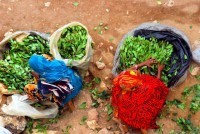
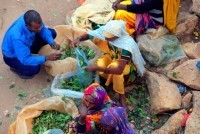
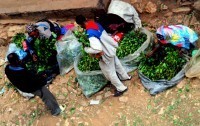

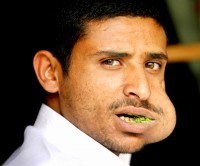
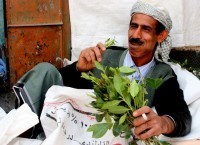
Blog post by Roderick Phillips, author of Weary Heart – a gut-wrenching tale of love and test-tubes.
The post The Chat chewers of Harar, Day 323 appeared first on Roderick Phillips.
June 16, 2014
Hyena feeding, Harar, Day 322
It is quite amazing what crazy things Christi and I do when we are on vacation. Of course our vacations are few and far between, but when we go on vacation we really go. This current vacation as you are no doubt aware is a year-long. If we were sitting in our apartment in San Francisco and a complete stranger asked whether we wanted to feed wild spotted hyenas, literally six inches from our face then I’d probably say, “Are you crazy?”And yet here we are, standing in some waste ground on the outskirts of Harar in Eastern Ethiopia paying for the privilege to do just that! And I can’t emphasize enough that these are wild spotted hyenas, not trained animals. Also, as you can see from the accompanying photos, these animals are big and powerful.
Spotted hyenas are genetically closer to cats, but behaviourally they act more like dogs, so maybe dog-like cats is the most accurate description of these guys. Females are the dominant sex, growing larger than the males (up to 200 lbs in extreme cases). And here are two disturbing facts for you. First, the spotted hyena are well-known for their powerful jaws, sharp teeth, and bone crushing abilities. With a pressure of 800 kg, a hyena’s jaws are more powerful than those of a tiger, a grizzly bear, or a lion. And they use their powerful jaws to consume all of the body parts of their prey including skin, teeth and bones. Second (and we hope less relevant to this evening’s entertainment) the genitals of the female spotted hyena closely resemble that of the male. The clitoris is shaped and positioned like a penis and is capable of erection (I don’t want to know how that piece of information was obtained, by the way). Moreover, the female spotted hyena does not possess an external vagina. Instead, the pseudo-penis is traversed to its tip by a central urogenital canal, through which the female urinates, copulates, and gives birth. So now you know and you can thrill your friends with your incredible general knowledge!
Of course, this does not help Christi and I as we nervously approach the Hyena Man of Harar, who has called in spotted hyenas from the surrounding hills. This event occurs just after the sunset – not only to add to the atmosphere, but also to allow farmers working outside the city to return during daylight and in safety. Well that does not inspire much confidence in me, and yet I do not turn away. If anything I’m drawn even further into the light given off from the headlights of a tuk-tuk that brought us to this deserted spot outside the city gates. The hyena man waves us forward. Like a true gentleman I let Christi go first and when she stays rooted to the spot I give her an encouraging push in the back (I’m the photographer and she is my muse – or in this case, potential bait). Initially the Hyena Man takes a strip of camel meat, attaches it to a stick 6 inches long and then puts the stick into his mouth. A large spotted hyena races out of the gloom, opens its jaws very wide and for a moment the Hyena Man’s head disappears from view. In a flash, the powerful jaws snap down on the camel meat, and the hyena pads away licking her lips (okay, maybe not licking her lips, but sufficiently satisfied to have left the Hyena Man’s head on his shoulders). The Hyena Man says this large female is called Tika and she is the pack leader. Reluctantly, Christi kneels down (an image of someone being beheaded pops into my head) but being the dedicated photographer that I am I concentrate on the moment in hopes of capturing the perfect image. The Hyena Man then gives Christi a clean stick with a strip of camel meat attached, which she places in her mouth and he tells her to keep very still. Christi then places her hand in front of the meat and only when she drops her hand will the hyena approach – we hope! It all happens in the blink of an eye, the hyena lopes in, reaches up and snatches the meat without even touching Christi. It is a rush like no other she says. Well, I got to get me some of this, so we change positions. This time I kneel down and place the stick in my mouth, a strip of raw camel meat dangling enticingly just a few inches from my face. Tika looms up in front of me and boy do I suddenly feel vulnerable. “Keep still”, the Hyena Man insists (easy for him to say). The hyena’s head inches from mine, her powerful jaws opening (it’s like a scene out of the movie Alien), (adrenaline is surging within me) all I see is teeth and saliva, while hot breath catches my face (my heart is thudding against the wall of my chest), and SNAP! She pads away into the night and I am left alone with an image and a feeling that I shall never forget. Now this is why Christi and I travel.
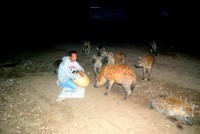
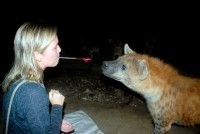
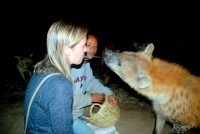
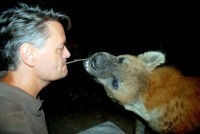
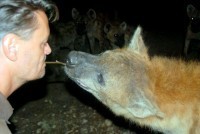
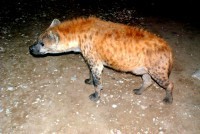
Blog post by Roderick Phillips, author of Weary Heart – a gut-wrenching tale of love and test-tubes.
The post Hyena feeding, Harar, Day 322 appeared first on Roderick Phillips.
June 15, 2014
Addis Ababa to Harar, Day 321
A combination of factors are at play today that leave Christi and I for perhaps the first time on our Year of Wonder thinking more about the comfort we are giving up rather than the adventure that lies before us. Although our tiny apartment in San Francisco is not as luxurious at the Hilton hotel in Addis Ababa, both have that squishy comfortable feel that is addictive. The 10-hour bus journey from Addis to Harar in the east of the country is another enthusiasm killer, although I shouldn’t complain about this as our Lonely Planet guide said that until very recently it was a two-day journey involving a change of bus in the regional capital of Dire Dawa. The third strike is the early start. We have to be up at 4 am and be at the bus station for a 5.30 am departure (farangi time). And finally, my bowels are feeling a little slack today. No doubt I picked this up from Christi who is now feeling quite perky again after a few days on Ciprofloxacin. I have no desire to start yet another course of antibiotics, but no bus in Africa to date has had a toilet on board (oh how I yearn for the buses of South America) so I’m going to resort to Imodium. I figure a little constipation is the lesser of two evils when compared to a potentially embarrassing episode on the Sky Bus service to Harar. We chose Sky Bus incidentally because it is one of the few buses to travel direct to Harar and also because it supposedly has a good safety record.
We leave on time and the bus driver is clearly in a hurry. In a race with the Japanese bullet train I think our driver would win. Of course he might end up killing himself (and us). Unfortunately Christi and I are sat right at the front of the bus and so have a bird’s-eye view of his suicidal tendencies. The driver’s favorite trick is overtaking on blind corners (and since it’s one lane in each direction, this is a particularly dangerous maneuver). As usual in Ethiopia the roads are full of herds of animals, carts being pulled by cattle, people, tuk-tuks and most worrying of all large trucks plying the route between the Eritrean coast and Addis Ababa (Fast fact: when Eritrea won its independence from Ethiopia in 1991, Ethiopia became a landlocked country). Even with a lunch stop (and in deference to my delicate stomach I merely watch Christi eats injera) we cover the 500 km between Addis Ababa and Harar in 8.5 hours. The driver seems very pleased that he we accomplished the journey 90 minutes ahead of schedule. I just feel lucky to be alive. I guess a good safety record is relative. We didn’t crash, but our hearts were in our throats, in the pit of our stomachs, and occasionally beating out of our chests.
Harar is located on a hilltop in the eastern end of the Ethiopian Highlands, some 1,885 m (6,000 feet) above sea level. The town was founded in the 7th century by Arab immigrants and has been a major commercial centre for centuries. Harar is linked by historical trade routes with the rest of Ethiopia, the entire Horn of Africa, and the Arabian Peninsula. In 2006 the old walled city (known as Harar Jugol) was designated a World Heritage Site by UNESCO in recognition of its cultural heritage.
Christi and I alight from the bullet bus as quickly as possible and use the Lonely Planet guide to Ethiopia to identify suitable accommodation. We couldn’t agree a price at our first choice, the Ras hotel. It seems odd to me that the hotel would not give us a little discount and instead preferred to keep the room empty. Harar is not exactly overflowing with tourists. In the end we settle (OK, I settle – I think Christi would have been happy to pay full price at the Ras) for the Belayneh hotel. The people here are much friendlier, although the place has a distinct lack of facilities – like power and water! With little opportunity to relax in the room I persuade Christi to take a stroll around town with me vaguely in the direction of the walled city. And much like the Lower Omo Valley we are immediately greeted by a cultural plethora of ethnicities, including Oromo, Harari (Adare), Amhara, and Somali nomads who all call Harar and its environs home. I think it’s all quite exciting, although not, apparently, in comparison with a hot shower.
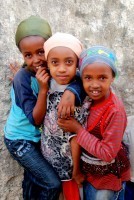

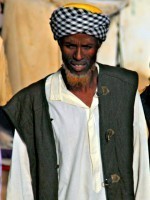
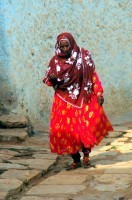
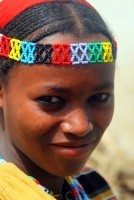
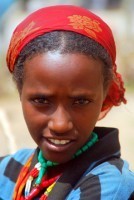
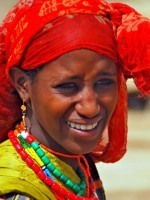
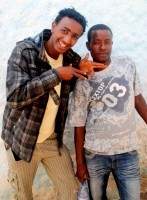
Blog post by Roderick Phillips, author of Weary Heart – a gut-wrenching tale of love and test tubes.
The post Addis Ababa to Harar, Day 321 appeared first on Roderick Phillips.
June 14, 2014
Faces of Ethiopia, Day 320
If I haven’t already communicated this fact sufficiently well, I’m going to use this post to highlight the point further. Ethiopia is just an amazing country to visit, particularly for its cultural diversity. The north is dominated by the Amhara people who predominantly practice christianity. The south and southwest is simply an ethnically diverse hotspot. The people of the Lower Omo Valley are predominantly animist in their beliefs. Meanwhile, the eastern part of Ethiopia (in the area known as the Horn of Africa) is heavily influenced by the religion and culture of the Arabian Peninsula. It is for this reason, therefore, that the people who live in the historic walled city of Harar are predominantly Muslim. Christi and I plan to get off our lazy butts and visit Harar tomorrow.
Beyond the immense cultural variety that I’ve already mentioned above there is also the Oromo people who inhabit large swathes of the center of the country and are equally split between Christianity and Islam, while the far north (an arid, desolate area around the Danakil Depression often regarded as one of the most inhospitable regions on earth) is home to the ferocious nomadic Afar people who eke out a living mining salt and bringing it to market in camel trains. And if culture is not your thing, Ethiopia is also blessed with amazing trekking in the Simien mountains in the north, the Bale mountains in the south and desert safaris to the east. Ethiopia is a birdwatchers’ paradise and there are a dozen national parks / wildlife sanctuaries. The wildlife is not as prolific as East Africa, but some of it is unique and indigenous to Ethiopia. I don’t know if I’m convincing you to visit Ethiopia, but I think I may have convinced myself to come back. I would very much like to see the famous Ertale volcano and its lava lakes in the Danakil Depression. Extreme conditions; extreme adventure; I just love it. And while we’re on the subject of cool places to visit, another that gnaws at me is trekking the Wakhan Corridor. I think this is a remote area of great beauty and ethnic diversity, which was created out of political expediency as a buffer zone between the Russian Empire and British India. I’ll just have to add it to my bucket list.
So most of these thoughts are whizzing through my mind as I sit by the pool at the Hilton hotel, indulging shamelessly in the luxury on offer. Christi is beginning to feel a little better after her latest brush of vomiting and diarrhea. Thank goodness for ciprofloxacin. Don’t leave home without it if you plan to visit Africa and intend to get off the beaten track. It should be in every traveler’s box of pharmaceuticals! In the meantime here are a few reminders of the people we have met so far in Ethiopia. I think of them all fondly as I succumb to a massage in the Hilton Spa. Well, traveling is very hard work…
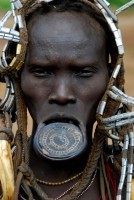

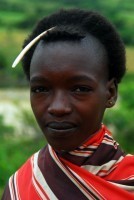

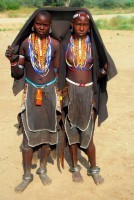
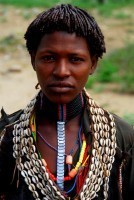
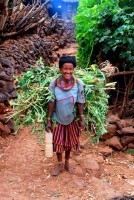
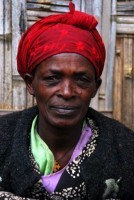
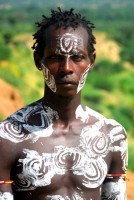
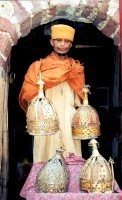
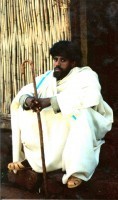
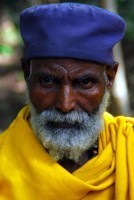

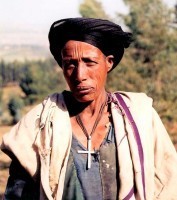
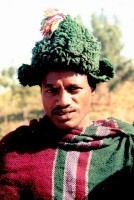
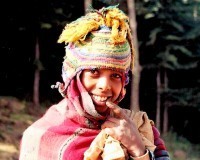
Blog post by Roderick Phillips, author of Weary Heart – a gut-wrenching tale of love and test tubes
The post Faces of Ethiopia, Day 320 appeared first on Roderick Phillips.
June 13, 2014
Konso tribe, Southern Ethiopia, Day 319
Today is the last day of our mammoth cultural safari of Southern Ethiopia and the Lower Omo Valley. And although we have visited several ethnic groupings there are many more we did not see. It would probably take weeks to meet all the peoples of this area and years to truly begin to understand their various cultures. I suppose what I’m saying is that maybe Christi and I will be back again in the future. For us at least Ethiopia is just a magical country. Before we return to Addis Ababa Fekade, our driver-guide, has organized for us to visit the nearby Konso village of Gamorle and this time we actually get a guided tour.
The first thing our guide tells us is not to give the children any gifts or money as this is becoming a serious problem in the Konso villages. He then goes on to describe the local culture. Konso society is largely agricultural and involves the irrigation and terracing of mountain slopes. In fact the terraced agriculture we see here reminds me of the Incas in Peru. Staple crops for the Konso include sorghum and corn, while cotton and coffee are grown as cash crops. Cattle, sheep, and goats are raised for food and milk.
Konso villages are typically located are located on high plains or hill summits selected for their strategic and defensive advantage. These towns are circled by dry stone defensive walls into tight compounds with narrow alleyways; often times entrance is via a tunnel, which places any would-be foe at an immediate disadvantage.
Perhaps the most distinctive aspect of Konso attire are the double-layered skirts worn by the women. Interestingly, there are separate public bathrooms for men and women; I didn’t have the nerve to ask who gets the miserable job of keeping these places clean! Konso boys aged 12 onwards leave their family homes at night to sleep in the village’s communal house until they marry. Historically, this practice is more to do with being able to mobilize the men and older boys if the village came under attack. The coming-of-age ceremony in Konso culture is noticeably less intense than that practised by the Hamer people. A Konso boy has to heave a 15 kg stone over his shoulder three times. The Konso also practice polygamy, specifically a man can marry several women.
When a warrior dies, they are honored with a carved wooden sculpture called a waga. The statues are often arranged in groups, with statues representing the man, his wives, and his adversaries present. Unfortunately this aspect of Konso culture is dying out because many of the statues were stolen for sale to diplomats and tourists (not guilty) and also because of the relentless activities of missionaries who frown on ancestor worship.
All too soon we have to leave the Konso village and begin the long slog back to Addis Ababa. The route Fekade intended to follow is closed and so we have a scenic detour through the mist-covered valleys and peaks of the Chencha mountains, which is where we began our adventures 10 days ago. We lunch, our last authentic injera meal with Fekade, in the delightfully sounding town of Sodo and then continue through more stunning scenery (agricultural terracing and picture-postcard mud huts) to the less glamorous urban sprawl of Addis Ababa and eventually the luxurious Hilton hotel. Say a fond farewell to Fekade (we tip him extravagantly and for once I’m happy to do so) and try to take in the amazing experiences of the Lower Omo Valley while lapping up a little, much-deserved, modern luxury – a long soak in the bath.
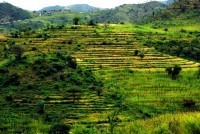
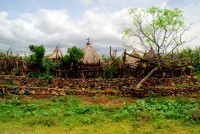
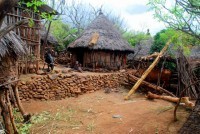
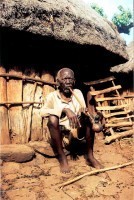
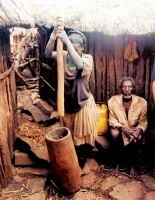

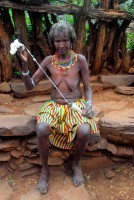
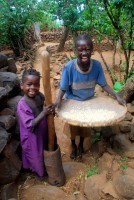

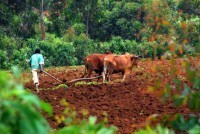

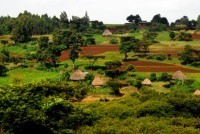
Blog post by Roderick Phillips, author of Weary Heart – a gut-wrenching tale of love and test tubes.
The post Konso tribe, Southern Ethiopia, Day 319 appeared first on Roderick Phillips.
June 12, 2014
Arbore tribe and Tsemay tribe, Day 318
After an uncomfortable night of vomiting and diarrhea, Christi starts a course of ciprofloxacin today (and for those of you keeping count we have both had two courses of ciprofloxacin now – and all since we have been in Africa). The Dark Continent is not for the faint hearted nor for those with a delicate GI system, but Christi is a trooper and we keep going. In fact Fekade our driver-guide is determined to show us as many of the ethnic groupings in the southern Ethiopia as possible and two more are the list for today: the Arbore and the Tsemay. Before we delve into the culture of these two groups, though, I did want to make another comment about Fekade. Naturally he is always on time for our morning departures (although as far as I can tell he never stays in the same hotel as us), but what is most remarkable is that he cleans his Toyota Landcruiser daily. In the dusty, sometimes muddy, south of Ethiopia his (white) SUV simply attracts dirt inside and out. Yet every morning he and his car both arrive in pristine condition. Christi and I are very impressed. Fekade even brings a fresh pineapple with him and Christi nibbles on it tentatively.
We leave Turmi lodge at 7 am and drive east, bypassing the Hamer mountains, which rise 5,000 feet above us, before looping back to the north. Fortunately the weather has been kind during our trip, although it is bloody hot and the air conditioning in Fekade’s SUV is most welcome. We drive out of Hamer territory and the Lower Omo Valley along a gravel road. Throughout our exploration of this area we have consistently spotted wildlife, including baboons, dik-dik (small deer), foxes, and guinea fowl and today is no different. In fact the roads, which are normally fairly busy as locals go about their daily activities, are deserted and wildlife is all we spot.
The Arbore inhabit the fertile Rift Valley. These people are thought to be descendents of the Konso tribe who live further to the east (more about the Konso tomorrow, but they are the most numerous of the ethnic groupings in southern Ethiopia numbering some 250,000). In that respect the Arbore people are culturally closer to the Konso, having little interaction with the Hamer and Banna tribes. Fekade tells us that the Arbore are one of the few tribes in this area to practice both male and female circumcision. Again there are few Arbore left, less than 7,000 is the best estimate.
Barely have we stepped out of the car, when the locals (predominantly girls and women) descend and start pawing and grasping my arm shouting “Photo! Photo!” It’s all too much for a still delicate Christi who returns to the SUV. The women are verging on the hysterical and I have to ask Fekade to intervene and bring some order. The village elders start whipping the women to calm them down. OK, I made that last part up, but boy are these women aggressive. Now the one thing guaranteed to turn a hysterical woman into a silent statue is to take their photo. Where moments before a Tasmanian Devil was unleashing her fury, now it’s as if the petrificus totalus spell has just been employed. Fekade urges them to lighten up a little and once I’ve snapped a few smiling faces the subject rushes over to the SUV where Christi hands over the money through an open window.
A further hour up the road and we stop again, this time at a Tsemay village. These people are also closely related to the Konso and the Arbore, but are much more laid back than their cousins to the west. Indeed, they barely acknowledge our presence and certainly do not rush up to me desperate for me to photograph them. The downside to this of course is that it is hard to find people who want to be photographed and who are wearing traditional dress. Much like the Ari, the Tsemay have largely forsaken animal hides in favor of pants and shirts.
Finish the day in another lodge, this time in Konso, which allows Christi to nurse her stomach in relative peace for the rest of the day. Tomorrow we will tour one of the Konso villages in the area and by the end of the day we will be back in the delightful arms of the Hilton Hotel in Addis for two nights. Then it will be my turn to grasp and clutch at every sliver of luxury I can get!
Blog post by Roderick Phillips, author of Weary Heart - a gut-wrenching tale of love and test tubes.
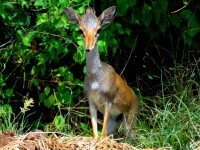
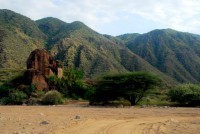
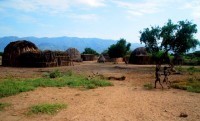
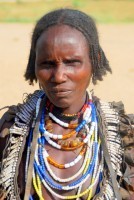

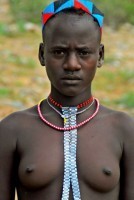
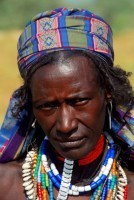
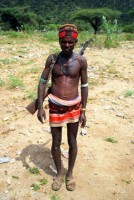
The post Arbore tribe and Tsemay tribe, Day 318 appeared first on Roderick Phillips.
June 10, 2014
Hamer tribe, Lower Omo Valley, Days 316 and 317
Christi and I are in the epicenter of Hamer territory and the weekly markets in Turmi and Dimeka offer excellent opportunities to meet them. And not 5 minutes from our lodge on the outskirts of Turmi is the Hamer village of Gambala. Over a two-day period Fekade, our driver-guide, takes us to all these locations. We begin at Gambala early in the morning on our way to the Dimeka market. Everything is quiet as we pull into the village, but that changes quickly as word circulates that camera-toting tourists are in town and cameras mean money. Suddenly Hamer men, women, and children appear in droves from their huts or from the fields – or even from other villages. And these folks demand to be photographed. I take as many shots as I can, leaving poor Christi to try to figure who should get what money. It’s all rather intense and the intensity levels rise as we get ready to leave and those that have yet to be photographed shout ‘Photo! Photo’. One girl who I had not photographed got so mad that she took up a 2-by-4 block of wood and barred our exit! Who knew photography could be so dangerous. And of course I readily succumbed to the threat of violence and photographed the bloody girl
The Hamer number around 30,000 and are subsistence agro-pastoralists (people living by a mixture of agriculture and livestock herding). Cattle and goats are the main domestic livestock, while sorghum, tobacco, and cotton are the principal crops cultivated. Much like the Karo, the Hamer women use a mixture of animal fat and ochre to give their hair a copper color. Hair is often fashioned into long chords. Women typically wear bead necklaces, iron rings on their arms, and (for married women only) an iron torc (ring) around their neck (which symbolizes the wealth and prestige of the husband). The women wear animal skins (although they often go topless) decorated with cowrie shells. The men are less dazzling, although if they have recently killed an enemy or dangerous animal they are permitted to decorate their hair with clay buns and feathers. And the number of ear piercings a man has reflects the number of wives he possesses. So symbolism is an important part of Hamer culture. Along those lines we see many women who have extensive scarring on their backs. We are told that this is all part of one of the most famous rites of passage ceremonies here in the Lower Omo Valley, the Jumping of the Bulls. If you recall many Karo youths were attending such a coming-of-age ceremony (at a different village) when we were in Korcho yesterday. A similar event is planned for the Hamer youths in a few days in Dimeka. Unfortunately we will not be around to see it. Basically the boy has to run across the backs of 10 bulls four times naked without falling. If he succeeds then he is deemed old enough to marry. At the same time the female members of the boy’s family engage in a kind of extreme hazing. The young Hamer men are taunted into whipping the backs of the women. It is extremely painful and causes severe scarring. The scars are a symbol of devotion to the menfolk and the practice is encouraged by the tribe. Personally I’d rather be running over the backs of some angry bulls buck naked than engaging in some 50 Shades of Gray type orgiastic bondage. But that’s just me. I don’t judge those who like a bit of flogging now and again.
The markets seem more of a place for socializing than anything to do with major commerce. Chewing tobacco and ochre were popular items for sale. We also see a few Banna women at the markets. And apparently another way to tell the Banna and Hamer women apart is that the Banna wear calash gourds on their heads, partly for decoration and partly to keep their hair dry when it rains!
Perhaps it was a mistake to eat lunch at the Dimeka market because later that day as we returned to our lodge, Fekade is forced to make a quick stop on the side of the road. Christi throws the door open and vomits into the red dirt. She also vomits in the grounds of the lodge before hastily taking to her bed. Oh dear. As an amusing aside – well I think it’s amusing but then I’m not the one feeling sick this time – but Christi’s most embarrassing vomiting story occurred in the Royal Palace in Phnom Penh, Cambodia. So intense was that episode, the vomit actually came out of her nose. A fact that I may have pointed out to her, unnecessarily as it transpired. Later, a long time later actually, she admitted that the vomit stung her nasal passages during its bid for freedom. Now don’t tell me that isn’t funny!
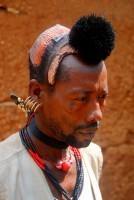
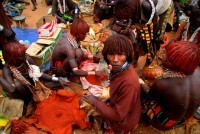
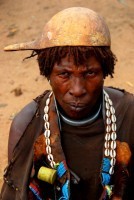
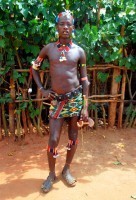

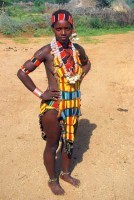
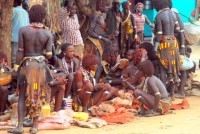

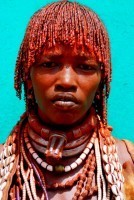
Blog post by Roderick Phillips, author of Weary Heart - a gut-wrenching tale of love and test tubes.
The post Hamer tribe, Lower Omo Valley, Days 316 and 317 appeared first on Roderick Phillips.
June 9, 2014
Karo tribe, Lower Omo Valley, Day 315
It’s a 2.5 hour drive from Turmi to the Karo village of Korcho through an idyllic slice of untouched rural Africa. There are no power lines, communication towers, or any other suggestion of the modern world. There is nothing taller in fact than an acacia tree or a brick-red termite mound. Much like yesterday we pass many tribes people (predominantly Hamer, this being Hamer territory) during our journey. Fekede, our driver-guide, promises we will meet the Hamer tomorrow, but today is devoted to the Karo. These are perhaps the most endangered of all the tribes people in the Lower Omo Valley, numbering little more than 1000. Their territory is on the east bank of the Omo river, squashed between the Hamer to the south and the Banna to the north. Originally pastoralists, they now survive by practising agriculture.
As usual Fekade approaches the village chief asking for permission to visit the village and once a ‘present’ exchanges hands Christi and I are free to wander around. The village of Korcho lies on a bluff above the Omo river, which Christi and I are seeing for the first time. It may not have the fame of the Amazon or the Nile, but without it the complex melding pot of ethnicities would not exist in this area. The Karo are friendly and much like the Mursi eager to be photographed. Okay, that might not be entirely true, but they know that they only way they can earn money is by posing before the camera. And sometimes they go to ridiculous lengths to attract my attention: the girls all pose topless (which does get my attention), while others paint their bodies (the Karo are famous for their body painting using white chalk, which they do normally in preparation for dances, feasts, and celebrations). Many of the young women have a pierced lower lip with an inch-long nail protruding. And yet others have short hair dyed red, the result of mixing animal fat and the pigment ochre.
The experience of being in the village is something of a photographic frenzy. Perhaps the Karo assume that all tourists want to take photographs, which is probably true but it’s then difficult to learn much about the culture of these people when I’m literally forced to take photos. As soon as one person has collected their fee from Christi the next person – man, woman, child takes their place, demanding to be photographed so they too can collect money from Christi. In the end, and I can’t believe I’m saying this, I have to ask Fekade to intervene and the locals to give me some breathing space. An envoy of the chief takes us on a brief tour of the village and we are accompanied at a discreet distance by an entourage of locals who are waiting for the moment when I start taking photos again. We do learn that Karo, Hamer, and Banna are all related to varying degrees and intermarriage between tribes is possible. This is not the case with the Bumi tribe who live further to the south and who are the sworn enemy of the Karo. A rite of passage shared by the Karo and the Hamer is the Jumping of the Bulls ceremony. This is performed by teenage boys as they transition into manhood. In fact many Karo youths are currently attending this ceremony at the village of Kangatan (the largest of the Karo villages) further to the west. It is clear that Christi and I will be unable to leave the village until I take a few more photos and we brace ourselves for the onslaught. We are tired, financially poorer, but ultimately very privileged to have shared time with the Karo when we finally say goodbye.
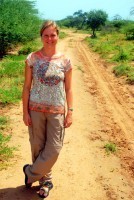
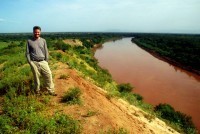
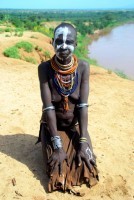
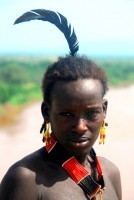

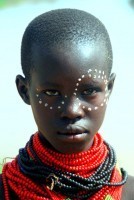

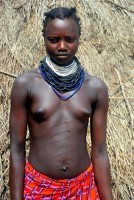
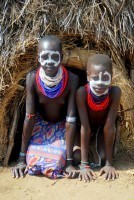
Blog post by Roderick Phillips, author of Weary Heart – a gut-wrenching tale of love and test tubes.
The post Karo tribe, Lower Omo Valley, Day 315 appeared first on Roderick Phillips.
June 8, 2014
Ari tribe and Banna tribe, Lower Omo Valley, Day 314
The Lower Omo Valley is virtually unique not only in Africa, but in the world in that so many different peoples inhabit a tiny (and remote) area and we continue to meet new tribal groupings each day. Today it’s the Ari and the Banna. Indeed, it is this remoteness that has for the most part allowed these different tribes to retain their cultural integrity, although the interest shown by the modern world will no doubt erode this. New roads are being built funded by the Chinese, while large dam and irrigation projects are planned by the Ethiopian government (and boy is it wet down here) that could permanently change the lifestyle of the indigenous peoples that call the Lower Omo Valley home. From an outsiders perspective you wonder why the central government is so ambivalent about this unique cultural heritage. But it only takes a second to remember that throughout history and continuing to this day minority groups from around the world have always been persecuted by the majority. Native Americans in the USA, the Jews in Europe, and any number of examples in Africa – perhaps most infamously the Tutsi minority by the Hutu majority in Rwanda. Okay, enough moralizing, Christi and I are here to embrace this cultural crossroads (and let us not forget that one of the oldest examples of man’s ancestors – the skeleton of Lucy, a 3.2 million-year-old hominid – was found in northern Ethiopia).
The Ari inhabit the area around Jinka. They number about 100,000 (compare this to the Mursi who number only about 5,000) and are the group that have become most assimilated into the modern world. We visit the nearby Ari village of Rocky on our way to Turmi (in Hamer territory). It is another wet and cold day, but the Ari are very friendly and inviting and Christi and I are welcomed into the village. I think our driver-guide Fekade pays an entrance fee to the village chief, but I never see any money change hands. I have to give Fekade yet more praise here, because while Christi and I explored Jinka market yesterday, he scoured the town looking for 1 Birr notes to pay for the hundreds of photos I am taking. I think you could spend an entire lifetime in this area taking photos and learning about the various tribes and their cultures. You probably won’t be surprised to learn that this trip to the Lower Omo Valley already rates as my favorite experience in Africa. The Ari are happy to show us some of their traditional lifestyle activities (I wonder what the locals think about our interest in these things. I mean would anyone pay to watch me wash my car or Christi vacuum our apartment in San Francisco?). We wander around the rain-sodden village (in the company of another large crowd – it’s hard not to feel a little like a celebrity) stopping at different huts to watch a pottery demonstration, a blacksmith at work, and preparation of injera (the national dish).
Later we leave Ari lands and continue through Banna territory, stopping for lunch in Key Afar, to Turmi the main Hamer town. The Banna number around 40,000 and mostly practice agriculture, but supplement this some opportunistic hunting. The women in particular are distinguishable from the Ari and the Mursi in that they fashion their hair into cords. We see several Banna men and women along the side of the road. They are not immediately friendly, but when the 1 Birr notes appear their attitudes soften. The road is good in places, but a bog in others. Fekade negotiates these challenges with consummate ease. Christi and I are amazed to find a quite delightful lodge, the Turmi Lodge, on the outskirts of the town. It has clearly been built for tourists (and for tonight at least that means Christi and I) and again features large comfortable beds with mosquito nets, sit-down toilets (in the depths of the Lower Omo Valley people!!),showers, and comfy chairs. There is even a restaurant on site, which is where we end another perfect day in this remote part of the world.

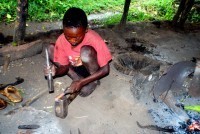

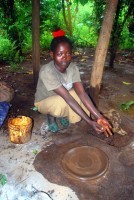
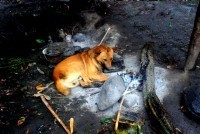
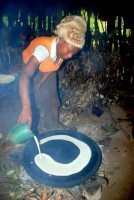
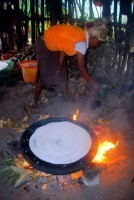

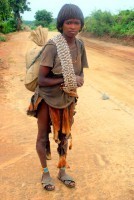
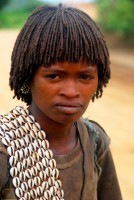

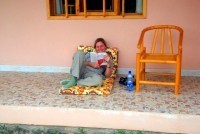
Blog post by Roderick Phillips, author of Weary Heart – a gut-wrenching tale of love and test tubes.
The post Ari tribe and Banna tribe, Lower Omo Valley, Day 314 appeared first on Roderick Phillips.
June 7, 2014
Jinka market, Lower Omo Valley, Day 313
Jinka is a market town in the Lower Omo Valley with a population of some 22,000 – a number that swells during the weekly market as folks from the different tribes head into town from the remote villages in the area. There are no public buses and these indigenous tribes do not have access to private vehicles so it’s either walk or perhaps ride on the back of a donkey. And these people are walking 20 or 30 miles over two days to get to Jinka and then it’s another 2-day hike to get back to their villages. Not surprisingly, therefore, there is a party atmosphere on market day. Even in the rain and its rains intermittently throughout the day. Still this does not deter Christi and I and we leave the Jinka Lodge in good spirits. Incidentally, this lodge pales in comparison with Paradise Lodge in Arba Minch, although the Jinka Lodge is far superior to the accommodation we endured during our previous visit to the Omo valley. Then we camped in the rain and had to share perhaps the most disgusting communal squat toilet on the face of the earth. In fact at that time we felt as if we had reached the end of the earth as we crossed rough terrain and negotiated swollen rivers. Even the normally reliable Dragoman truck broke down, while two out of the three 4WD vehicles that took us on our ill-fated trip into Mago National Park to find the Mursi either cracked a rear axle or broke a spring.
We are not the only travelers in town, but there sufficiently few of us that we are noticed – initially by children who all want money (“Birr, Birr,” they shout holding out their hands) and then an unwanted guide attaches himself to us and makes the most obvious statements (“they sell firewood to make fires” etc). And so our weird unwanted coterie of disciples barges into Jinka market and attracts a lot of attention, which I was really trying to avoid. It’s easier to take more natural-looking photos if no one notices you are there. Much like the Mursi yesterday, the locals clam up and stare seriously at the camera. According to our actual driver-guide, Fekade, the main ethnic groupings in the market today are the Ari tribe (which are the most assimilated into modern living) and the Banna tribe with a few Mursi thrown in. Incidentally there is a second tribe called the Suri where the women use lip discs for cultural identification, but they live in west Ethiopia and are not part of this cultural safari. We will visit several more markets and several more villages over the next week and each will have a different ethnic make-up, depending on which tribes are currently friendly with one another versus those who are historical enemies.
Jinka market is a fairly basic affair. Most people simply unroll a mat and sell whatever limited items they have brought with them. And yes they do sell firewood, and no doubt the wood is burned (our unofficial guide in not getting a tip for statements like that). Probably the most common things we see for sale are vegetables, cigarettes and alcohol, domestic animals, and clothes. The market is bright and colorful and full of energy and even though Christi are in no need of the onions we are offered I am separated from a few more Birr by the irresistible Mursi. In fact one woman grabs my arm and insists that I photograph her. As you can tell from the photo I’m a sucker for a pretty face!
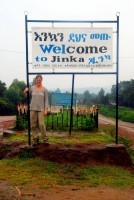
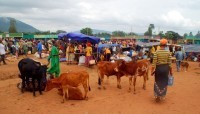
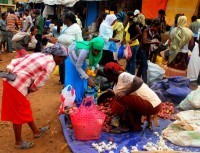
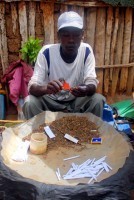
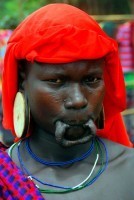
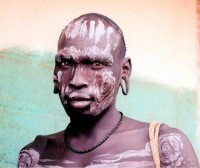
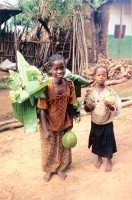
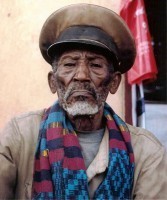
Blog post by Roderick Phillips, author of Weary Heart – a gut-wrenching tale of love and test tubes.
The post Jinka market, Lower Omo Valley, Day 313 appeared first on Roderick Phillips.


